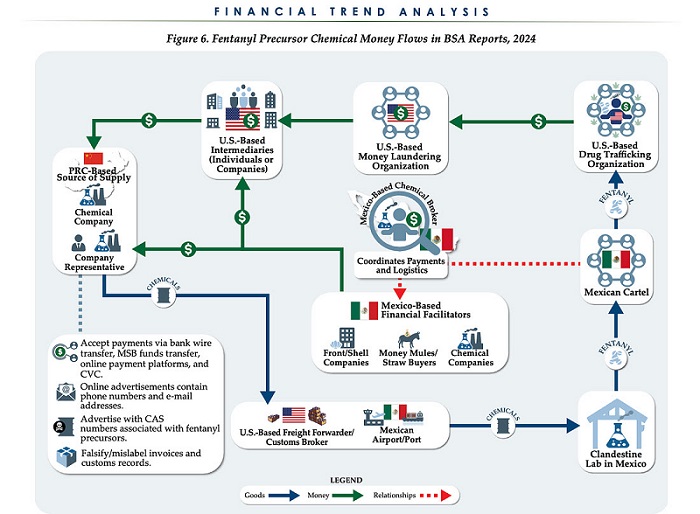Alberta
Never again! Preston Manning review recommends Emergency Management Agency co-ordinate response to future province-wide public emergencies.

Emergency Review Panel Releases Final COVID-19 Report and Recommendations for the Alberta Government
The Public Health Emergencies Governance Review Panel, led by Preston Manning, delivered its final report to the Government of Alberta, which includes over 90 recommendations for consideration.
The Panel was tasked by Premier Danielle Smith with undertaking a detailed review of the legislation and governance employed during the COVID-19 crisis, and to recommend changes and additional legislation to better prepare the province to meet future public emergencies. The mandate of the Panel was not to conduct an overall inquiry into the government’s response to COVID-19, but strictly to review the statutes that provided the legal basis for the government’s response to COVID-19.
Drawing upon the expertise and research of advisors and contractors commissioned for the study, the Panel arrived at a series of conclusions and recommendations for the Alberta Government to consider.
The recommendations of the Panel fall into three main categories, and included:
- Improving the focus and performance of the administrative and regulatory framework used to respond to provincewide public emergencies, including:
- Strengthen the Alberta Emergency Management Agency (AEMA) through legislative amendments and budgetary provisions to make it the lead government agency responding to and coordinating the response of the Alberta government to future provincewide public emergencies, including health emergencies.
- Develop and maintain a broadly-based Inventory of Scientific Advice and Scientific Advisors that can be drawn upon in the event of a public emergency.
- Mandate by legislation that preliminary, interim and post-emergency impact assessments be conducted in response to any future provincewide public emergencies.
- Reject provincewide school closures as a policy option in responding to a provincewide public emergency, except in the most exceptional of circumstances, and then only for the shortest possible period of time.
- Balancing the protection of Albertans from the harms caused by public emergencies with the protection of their basic rights and freedoms during an emergency period, including:
- Amend the Alberta Bill of Rights and Alberta’s Employment Standards Code and Health Professions Act to protect the rights and freedoms of all Albertans, including workers and healthcare professionals, and the freedom of expression during public emergencies.
- Increasing the overall capacity of Alberta’s healthcare system to respond to surges in demand caused by a public health emergency. Here, the Panel recognized that the government has already taken numerous incremental steps to increase the overall capacity of the healthcare system. The Panel commends those initiatives and recommends additional incremental steps, all compatible with the principles of universality and the Canada Health Act, including:
- Expanding the use of nurse practitioners and licensed practical nurses.
- Reducing or eliminating barriers to labour mobility for healthcare workers.
- Exploring options for attracting more healthcare providers into medical training
- Incentivizing medical graduates to serve in the most needed areas.
- Utilizing pharmacists to their full scope of practice.
- Expanding and improving the organization of home care services.
- Expanding the capacity of the Alberta healthcare system to deal with mental health.
- Expanding and supporting the use of virtual medicine and telemedicine.
- Streamlining system administration.
The panelists include Michel Kelly-Gagnon (President Emeritus of the Montréal Economic Institute), The Honourable John C. (Jack) Major CC KC (Former Supreme Court of Canada Justice), Preston Manning, PC CC AOE (former MP for Calgary Southwest and Leader of the Opposition in the House of Commons), Dr. Jack Mintz (president’s fellow of the School of Public Policy at the University of Calgary and a distinguished senior fellow of the MacDonald-Laurier Institute), Dr. Martha Fulford (Infectious Disease Specialist and Retired Chief of Medicine, McMaster University), and Dr. Robert Tanguay, Psychiatrist and Clinical Assistant Professor of Psychiatry and Surgery at the Cumming School of Medicine).
Quotes
“The COVID-19 pandemic and resulting global turmoil was unprecedented. Alberta, like the rest of the world, had to make decisions quickly and with limited, changing and even conflicting information. It is my hope that by adopting these recommendations, the Government will be better equipped to cope with future emergencies, and that the impacts on Albertans – their personal livelihoods, civil liberties, and mental health can be mitigated to the greatest extent possible.” – Preston Manning, Chair
“For the credibility of the study and our final recommendations, I felt it was important to select panelists and advisors with varied areas of expertise and perspectives on the key issues. For that reason, while there were certainly differences of opinion, I am thrilled that we were ultimately able to arrive at a consensus on the recommendations put forward.” – Preston Manning, Chair
Read the full report here.
Most Important Conclusions/Recommendation Per Chapter
- Strengthen, through legislative amendments and budgetary provisions, the Alberta Emergency Management Agency (AEMA) – whose members are specifically trained in emergency management – to make it the lead government agency for co-ordinating the response of the Alberta government to any and all future provincewide public emergencies. (Chapter 2)
- Appoint a Senior Science Officer, with multidisciplinary training and experience, to the AEMA, responsible for developing and maintaining a broadly based Inventory of Scientific Advice and Scientific Advisors that can be drawn upon in the event of public emergencies. (Chapter 3)
- Increase the effectiveness and accountability of the Alberta regulatory framework by increasing its evidence- based decision-making capacity, transparency, consistency, fairness, and self-correctability via feedback. (Chapter 4)
- Reject provincewide school closures as a policy option in responding to a provincewide public emergency, except in the most exceptional of circumstances and only then for the shortest possible period of time. (Chapter 5)
- Mandate by legislation the conduct of impact assessments prior to, during and after promulgation of orders and regulations for adoption in response to a declared provincewide public emergency. (Chapter 6)
- Recognize that public emergencies generate additional and exceptional pressures on governments to limit the exercise of rights and freedoms, and thus amend theAlberta Bill of Rights to specifically strengthen the protection of rights and freedoms under such circumstances. (Chapter 7)
- Increase the protection of the rights and freedoms of workers and healthcare professionals, during public emergencies, in particular their freedom of expression, through amendments to Alberta’s Employment Standards Code and Health Professions Act. (Chapter 8)
- Increase the overall capacity of the Alberta healthcare system, thereby increasing its capacity to meet surges in demand caused by public health emergencies, through the incremental measures proposed, while respecting the principle of universality and the provisions of the Canada Health Act. (Chapter 9)
- On the belief that Alberta can always learn from others, invite representatives from countries having healthcare systems that outperform Canada/Alberta to a Colloquium on 21st Century Healthcare Best Practices to identify the policies, legislation and features of their systems responsible for superior performance. (Chapter 9)
- The recommendations of this report are based on the general consensus of Panel members as to how best to prepare Alberta to cope with future public emergencies. But “preparing for future public emergencies” is an evolving process, subject to unforeseen factors and considerations. Therefore, alternative perspectives and narratives on how to best cope with future emergencies should also be welcomed, appreciated and examined.
Alberta
Made in Alberta! Province makes it easier to support local products with Buy Local program

Show your Alberta side. Buy Local. |
When the going gets tough, Albertans stick together. That’s why Alberta’s government is launching a new campaign to benefit hard-working Albertans.
Global uncertainty is threatening the livelihoods of hard-working Alberta farmers, ranchers, processors and their families. The ‘Buy Local’ campaign, recently launched by Alberta’s government, encourages consumers to eat, drink and buy local to show our unified support for the province’s agriculture and food industry.
The government’s ‘Buy Local’ campaign encourages consumers to buy products from Alberta’s hard-working farmers, ranchers and food processors that produce safe, nutritious food for Albertans, Canadians and the world.
“It’s time to let these hard-working Albertans know we have their back. Now, more than ever, we need to shop local and buy made-in-Alberta products. The next time you are grocery shopping or go out for dinner or a drink with your friends or family, support local to demonstrate your Alberta pride. We are pleased tariffs don’t impact the ag industry right now and will keep advocating for our ag industry.”
Alberta’s government supports consumer choice. We are providing tools to help folks easily identify Alberta- and Canadian-made foods and products. Choosing local products keeps Albertans’ hard-earned dollars in our province. Whether it is farm-fresh vegetables, potatoes, honey, craft beer, frozen food or our world-renowned beef, Alberta has an abundance of fresh foods produced right on our doorstep.
Quick facts
- This summer, Albertans can support local at more than 150 farmers’ markets across the province and meet the folks who make, bake and grow our food.
- In March 2023, the Alberta government launched the ‘Made in Alberta’ voluntary food and beverage labelling program to support local agriculture and food sectors.
- Through direct connections with processors, the program has created the momentum to continue expanding consumer awareness about the ‘Made in Alberta’ label to help shoppers quickly identify foods and beverages produced in our province.
- Made in Alberta product catalogue website
Related information
Alberta
Province to expand services provided by Alberta Sheriffs: New policing option for municipalities

Expanding municipal police service options |
Proposed amendments would help ensure Alberta’s evolving public safety needs are met while also giving municipalities more options for local policing.
As first announced with the introduction of the Public Safety Statutes Amendment Act, 2024, Alberta’s government is considering creating a new independent agency police service to assume the police-like duties currently performed by Alberta Sheriffs. If passed, Bill 49 would lay additional groundwork for the new police service.
Proposed amendments to the Police Act recognize the unique challenges faced by different communities and seek to empower local governments to adopt strategies that effectively respond to their specific safety concerns, enhancing overall public safety across the province.
If passed, Bill 49 would specify that the new agency would be a Crown corporation with an independent board of directors to oversee its day-to-day operations. The new agency would be operationally independent from the government, consistent with all police services in Alberta. Unlike the Alberta Sheriffs, officers in the new police service would be directly employed by the police service rather than by the government.
“With this bill, we are taking the necessary steps to address the unique public safety concerns in communities across Alberta. As we work towards creating an independent agency police service, we are providing an essential component of Alberta’s police framework for years to come. Our aim is for the new agency is to ensure that Albertans are safe in their communities and receive the best possible service when they need it most.”
Additional amendments would allow municipalities to select the new agency as their local police service once it becomes fully operational and the necessary standards, capacity and frameworks are in place. Alberta’s government is committed to ensuring the new agency works collaboratively with all police services to meet the province’s evolving public safety needs and improve law enforcement response times, particularly in rural communities. While the RCMP would remain the official provincial police service, municipalities would have a new option for their local policing needs.
Once established, the agency would strengthen Alberta’s existing policing model and complement the province’s current police services, which include the RCMP, Indigenous police services and municipal police. It would help fill gaps and ensure law enforcement resources are deployed efficiently across the province.
Related information
-

 Business2 days ago
Business2 days agoChina, Mexico, Canada Flagged in $1.4 Billion Fentanyl Trade by U.S. Financial Watchdog
-

 espionage2 days ago
espionage2 days agoEx-NYPD Cop Jailed in Beijing’s Transnational Repatriation Plot, Canada Remains Soft Target
-

 2025 Federal Election2 days ago
2025 Federal Election2 days agoBREAKING from THE BUREAU: Pro-Beijing Group That Pushed Erin O’Toole’s Exit Warns Chinese Canadians to “Vote Carefully”
-

 Daily Caller2 days ago
Daily Caller2 days agoTrump Executive Orders ensure ‘Beautiful Clean’ Affordable Coal will continue to bolster US energy grid
-

 Daily Caller2 days ago
Daily Caller2 days agoDOJ Releases Dossier Of Deported Maryland Man’s Alleged MS-13 Gang Ties
-

 2025 Federal Election2 days ago
2025 Federal Election2 days agoAllegations of ethical misconduct by the Prime Minister and Government of Canada during the current federal election campaign
-

 Energy2 days ago
Energy2 days agoStraits of Mackinac Tunnel for Line 5 Pipeline to get “accelerated review”: US Army Corps of Engineers
-

 Opinion2 days ago
Opinion2 days agoLeft Turn: How Viet Nam War Resisters Changed Canada’s Political Compass




